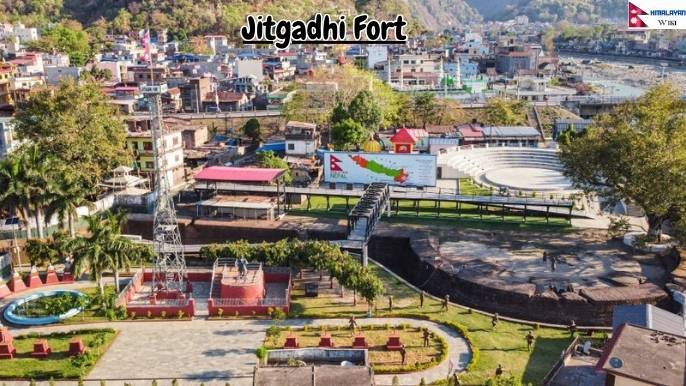Introduction
Jitgadhi fort or Jitgadhi Killa (also known as Butwal Gadhi) is a historical place in Pari Butwal along the Tinau River. It is one of the ancient and historical forts of Nepal where the Anglo-Nepal War took place between Nepal and the British East India Company.
✔ It is about 2 kilometers away from Butwal New Buspark and situated in the western and southern part of the Tinau Highway Bridge. This fort was made of ancient eras and bricks, and a large wall.
✔ On the northern side of the fort, there is the East-West highway (Mahendra Highway), and on the East side Tinau River passes through beside the city area. The main entrance gate is in the Southern part and it is free for everyone.
✔ Jitgadi Fort was built by the Sen dynasty in the 17th century. The Sen dynasty was a powerful kingdom that ruled over Nepal from the 16th to the 18th centuries. The fort was built to protect the kingdom from raiders.
History
✔ Although very little know about the early history of the Jitgadhi fort, legends and written records point to the fact that Jitgadhi as a boundary fortress protecting the Kathmandu Valley has been there, since the times of the Kirant Dynasty, about 4000 to 4500 years ago.
✔ Strategically located on the western bank of the Tinau River in Butwal in South-Central Nepal, this fort along with Nuwakot Gadhi and Kathe Gadhi acted as strong protective and abusive bases for the kingdoms of Kirant and Nepal.
✔ According to another legend, Mahisapalavamsa or the Buffalo Herder dynasty established by a Yadav named Bhul Singh funded the first structure of the Jitgadhi Fort.
✔ In Early 18th century, England’s East India Company was becoming so powerful in our neighboring county India. They were expanding their territory all over the India and they were planning to go China through Nepal. So that, Nepal had been targeted to East India Company to clear the path for trade.
✔ At last, The East India Company’s British colonel administrator Lord Hesting attacked Nepal in 1814 AD. This fort was used during Anglo-Nepalese war (1814-1816) where colonel Ujhir Singh Thapa led the army against East India Company(British army).
✔ They attacked the fort with a large force with advance technologies weapons, but they were defeated by the Nepali army with Khukuri shields and stones which was led by Colonel Ujhir Singh Thapa.
✔ The war ran about 2 years. Nepal’s Army Colonel, Ujhir Singh Thapa was very brave person. He had lots of brave Nepali soldiers with their effort and contribution Nepal won the historical battle with East India Company.
Features
✔ Inside the fort, there is a large courtyard. In this courtyard, there are so many statues with weapons in their hands which gives us the memory of that’s times reality.
✔ Though, few ruins remain of the fort protected and preserved, the government authority has tried to upgrade its value. Each statue have different facial expression. There are also connecting metal bridges, auditorium and room under auditorium.
✔ There is a big Nepali flag which stands high and can be visible from the distance. In recent times, the government has started to restore and renovate the Jitgadhi fort and it is now becoming a popular tourist destination.
| Read More: Flag of Nepal |
✔ Jitgadhi Fort stands as a evidence to Nepali soldiers’ bravery. Jitgadhi fort offers intuition into Nepal’s rich history and cultural heritage. It is being develop as a tourist spot. This site also offers beautiful landscapes of Butwal city along with Tinau river.
✔ There is a big life-size copper’s statue of Brave Colonel Ujir Singh Thapa facing towards north. Butwal Sub-Metropolitan City have decided to celebrate Jitgadhi Festival in Baishakh 7 on every year.
Design
✔ The distance of the Jitgadhi fort is 205 feet from East to West and it’s width is 55 feet. It looks very creative and is constructed with a very strong foundation.
✔ It is 4.3 feet high made up of 10-inch bricks and surki plastered wall. There is a tunnel which goes directly to the Manimukunda Sen Palace. preservation efforts


